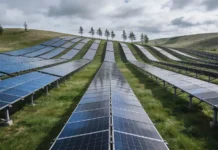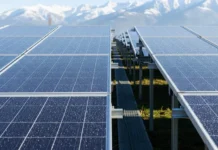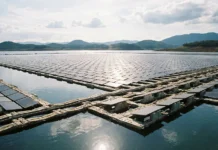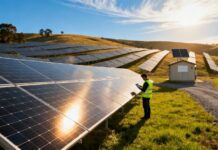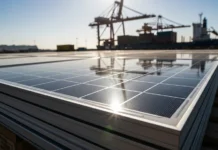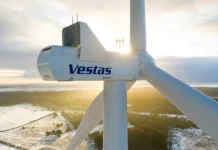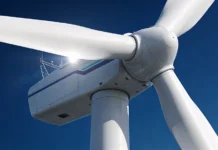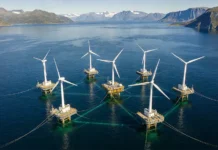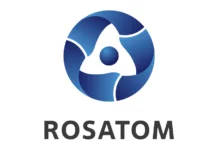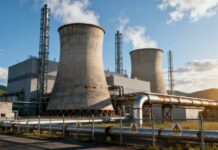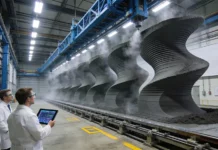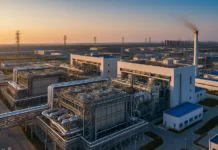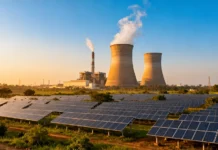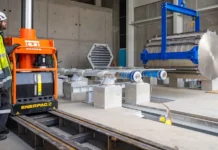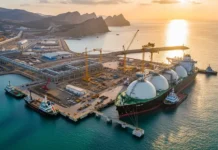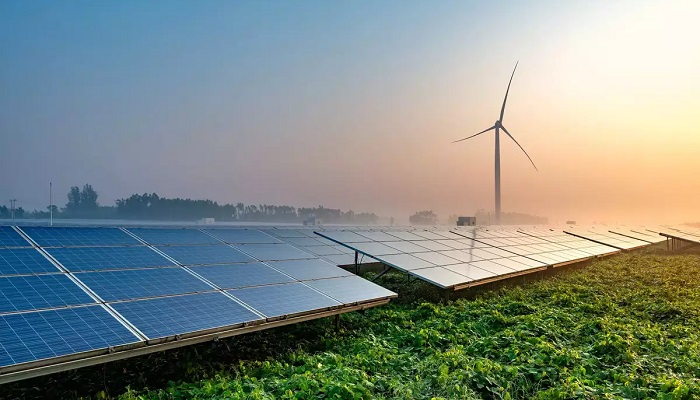With the world’s leaders accelerating the shift away from fossil fuels, there may never have been more ambitious goals for sustainable energy.
Therefore, the sudden move by Western governments to place protective tariffs on clean-energy technology by those who have long pushed free-trade agendas may come as a surprise, particularly to many in China.
Both the US and Europe recently put additional taxes on imported solar panels and electric vehicles (EVs), particularly those produced in China, in an effort to safeguard their own industries.
Today, this nation leads the world in the production of solar energy, batteries, electric vehicles, and, to a lesser degree, wind power. Tariffs, even in the event that they were effective in reshoring or diversifying supply chains, would appear to increase the cost of the clean energy transition.
Simple claims that tariffs and similar regulations level the playing field for competition are often used to defend them. Western firms are said to possess advanced technology, yet they are unable to compete with subsidies and low-cost labor. This argument misses important components of industrial strategy that allowed China to become the industry leader in renewable energy today.
My most recent work, “Clean energy innovation in China,” demonstrates how the dominance was achieved by a variety of strategies, among which state planning and subsidies were a significant but not always governing factor.
Rather, China has purposefully worked for a long time to become an expert in and localize renewable energy technology as a means of promoting both regional and national economic growth. Its arsenal included both overt and covert industrial policy instruments, and its ascent to the forefront of clean energy was anything but a straightforward tale of free-trade-based comparative advantage.
Subsidies: Expanding and customizing
One instrument China has used in its industrial strategy is subsidies. These were often modified from types that were already in use in the west. One such example is the feed-in tariff, which was modified from the model used ten years earlier in Germany and paid to domestic solar and wind facilities at a rate higher than that of coal plants.
China’s wind sector benefited from subsidies under the UN Clean Development Mechanism (CDM) prior to the implementation of feed-in tariffs. In those two areas, feed-in tariffs and CDM subsidies were essential for industry expansion. But China stopped providing subsidies for new domestic projects as soon as they were no longer required.
Subsidies have often been directly linked to technology localization. China implemented a local content criterion for wind projects funded by the Clean Development Mechanism (CDM) to prevent foreign enterprises from obtaining all of the income and economic benefits.
Foreign project developers or equipment suppliers were unlikely to get project permits for feed-in tariffs, and local governments could have even directed project approvals toward businesses with local ties, including state-owned firms.
The EV and battery sectors saw even more focused subsidies. At first, incentives for EVs were dependent on locally made batteries.
After that, the incentives were changed to mandate that local players become proficient in the three key technologies associated with EVs: batteries, motors, and control systems. No foreign firm ever made it onto the white list, which was created for businesses eligible for subsidies, until just before the list was eliminated.
Manufacturing clusters and industrial policy
Beyond subsidies, however, China’s central government has depended on industrial strategy to foster innovation and entrepreneurship in the clean energy sector; it often collaborates with local governments that are keen to support investment in strategically important sectors with promising future development. As a consequence, local manufacturing clusters centered on solar and batteries have emerged. These clusters did not form by accident.
Chinese areas have sometimes used copycat growth strategies in the past, which has led to waste and duplication as well as regional protectionism.
China created regulations for EV pilot locations in order to prevent this, restricting certain policy benefits to areas chosen based on their current industrial base, local policy incentives to encourage EVs, and facilities for charging EVs.
Local governments have likewise made manufacturing clusters a top goal. In Guangdong, for example, government representatives not only urged solar producers to begin production but also extended an offer to relocate suppliers into adjacent industrial parks, often evicting long-term industrial tenants in the process.
The Shanghai government successfully persuaded Beijing to loosen the joint-venture regulations so that Tesla could construct a gigafactory there. Following this, the government incentivized Chinese producers of electric vehicle components to settle in the vicinity and apply to become certified Tesla suppliers.
Local suppliers would help the whole domestic EV sector if they reached the quality standards required to compete globally. It was dubbed the “Catfish effect” by a senior official, who remembered that if you throw a catfish into a pond, all the other fish had to swim faster.
Change focused on the market: From catfishing to catfishing
But there have been other factors influencing supply-chain concentration besides policy. Market factors were also involved. China was the world leader in the production of solar cells and modules by the early 2010s, but by the middle of the decade, it was still trailing behind in producing the sophisticated and expensive instruments required to produce such products.
Already, fierce competition to reduce prices was pushing change. It’s possible that local equipment suppliers didn’t provide as high of a quality as global competitors, and sometimes their equipment failed.
However, having a shared language and being close by sped up problem-solving and, in the end, encouraged local suppliers to step up their game. These days, the majority of the tools available globally are supplied by Chinese manufacturers.
This highlights a crucial advantage China currently has in the renewable energy space: invention, which is almost never publicly recognized in the West. In several easily measured innovation indicators, including patents, high-impact research articles, or R&D expenditures, China has caught up.
More significantly, however, is that industrial clustering has sped up innovation in production-intensive products, such solar panels, batteries, and wind turbine components.
The silicon solar cell hasn’t changed much on the outside since the 1950s, but production prices have skyrocketed and efficiency has increased. When it comes to batteries or permanent magnets, the tale is similar.
While economies of scale have played a significant role in this, learning-by-doing and learning networks across equipment vendors have shown to be as vital.
Leading entrepreneurs and individual firms have known this for a long time. BYD serves as an example. The firm started out as a tiny player in the early 2000s, producing chips and components for well-known manufacturers of mobile phones, such as Motorola and Nokia. However, BYD discovered that without perfecting every step of the production process, it was impossible to match expectations for quality and performance.
Important choices to integrate vertically inside its own area were made as a result. According to reports, BYD now derives 90% of its components from inside the firm. Its vertical integration approach has led to the creation of a significant manufacturing cluster in Shenzhen, using the area’s pre-existing knowledge of electronics and electrical equipment.
As they grow internationally, Chinese businesses are also bringing these lessons with them. The leader in battery production, CATL, has revealed intentions to create a US$1.5 billion fund to finance investments in European suppliers and local components.
Although CATL currently manufactures batteries in Europe, its facilities in China are lagging behind in terms of production and quality because its local suppliers are unable to satisfy its demands or react to them promptly. Essentially, CATL is becoming the European battery industry’s version of the catfish.
Reevaluating industrial clusters: Is it feasible?
Only as we shouldn’t narrow our attention to only Chinese technology transfers or renewable energy subsidies, we also shouldn’t limit our discussion of Western policy to tariffs. There are also other industrial regulations in place, many of which are similar to previous Chinese demands for localization or mastery of important value chain components.
There does seem to be one significant distinction, though: the stated strategy seems to place less emphasis on industrial clusters. The conventional business approach in the West concentrates on honing a small number of core competencies before attempting to disperse production to regions with lower labor, tax, or logistical expenses.
This may include producing solar power in Southeast Asia or batteries in Morocco; Chinese companies often relocate their operations to these regions. Businesses claim they can never compete with China’s “speed” or “price” if they are unable to move swiftly enough inside their own borders or if labor and land expenses are too expensive there.
Disaggregating production, however, impedes the growth of quickly changing industrial clusters that have a foundation of specialized labor, concentrated capital, and intimate networks of implicit knowledge among suppliers. One of the main obstacles to plans that combine tariffs and subsidies is this.
If disaggregated production causes a speed and innovation gap for manufacturing-intensive businesses, then protection and subsidies will need to be in place indefinitely, and the predictions of an expensive energy transition are likely to come true.
Free trade was not the only means by which China became the leader in renewable energy. The fundamental idea was policies. Climate change has benefited greatly from China’s renewable energy boom, which has made carbon neutrality attainable by sharply lowering the price of wind, solar, batteries, and electric vehicles.
However, as time goes on, the solar and electric vehicle sectors will likely need to be somewhat localized in each of the main global regions in order to scale them globally. Costs will decrease more quickly and the energy transition will quicken if more areas can reach the technological frontier.
But more will be needed to do this without increasing prices than just protectionism or subsidies. In order to establish the circumstances whereby different countries can compete in various technological domains, it is probably required to have consistent policies and to place a focus on industrial clusters rather than disaggregation.


